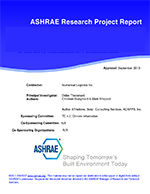Description
Rapidly increasing requirements placed on utilities to reduce peak loads has led to utility customer incentives to shift peak demand to non-peak times or reduce peak loads when notified by the utility that the grid is close to capacity. This study investigates methods used to reduce building demand during a fixed time window near a utilities on-peak period.
The objectives of this project are to identify and assess methods for managing peak loads in buildings via short-term adjustment of HVAC set points. The assessment was based on simulation, using a method that allowed comparison of results for multiple demand limiting strategies, geographical location, and building type. The specific objectives of the work are as follows:
Review the literature to pin point what has been done to implement short-term load control via HVAC set-point adjustment.
Specify the HVAC systems, building construction, thermal-comfort criteria to be assessed and the simulation package to be used for the assessment.
Develop a simulation protocol to identify the specific combinations of systems, building types, and set-point adjustments that will be evaluated.
Perform the simulations and analyze and present the results in a form that can be directly used by building operators, utility program managers and controls companies.
Specify control logic and upgrades in typical HVAC system controls hardware needed to implement the simulated load control.
Product Details
- Published:
- 2011
- Number of Pages:
- 1277
- File Size:
- 1 file , 44 MB
- Product Code(s):
- D-RP-1390




